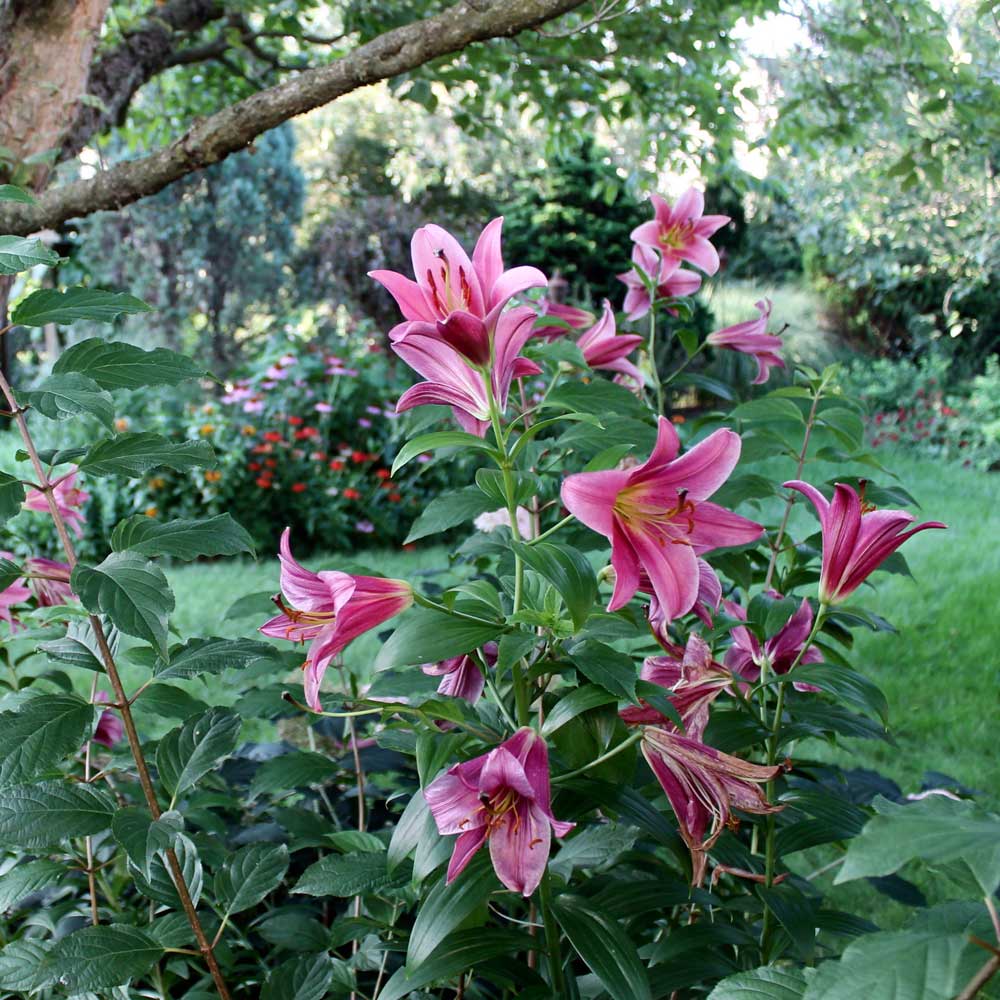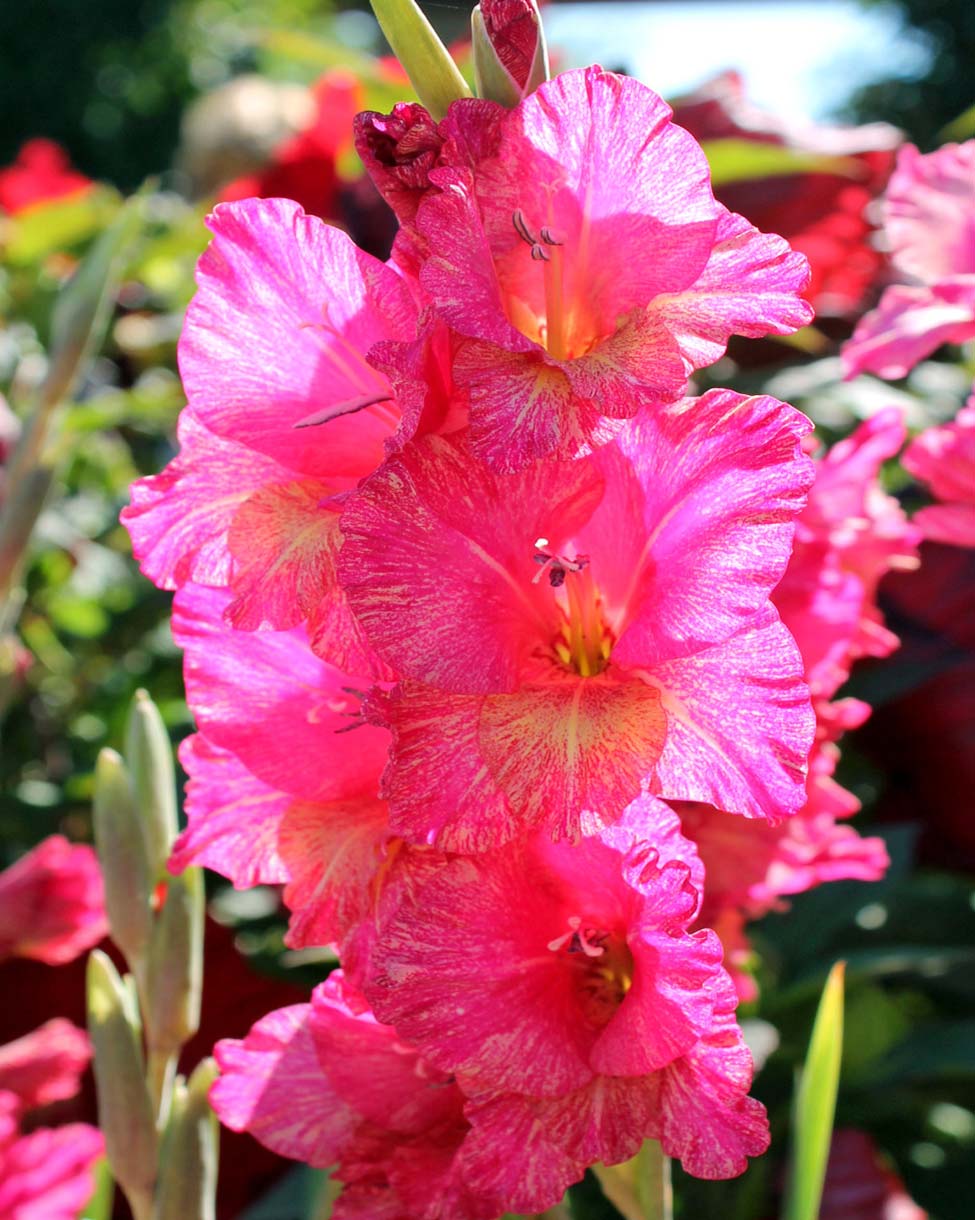A Pop of Red Can Brighten Any Garden
Red flowers brighten up any landscape. Plant any of these options for a vibrant, beautiful garden.
When people think of flower bulbs, they tend to envision tulips, daffodils, hyacinths, and other spring-time beauties that flower for a few weeks between February and May and then go dormant the rest of the year.
But there’s a whole other class of bulbs (and bulb-like tubers, corms, and rhizomes) that just gets started as the weather warms.
These are called summer bulbs, and they range from fairly well known favorites such as lilies, gladioli, and dahlias to lesser known choices such as crocosmia, Mexican shellflowers (Tigridia pavonia), and “naked ladies” (Lycoris squamigera).
Unlike spring-blooming bulbs, which are best planted in fall, summer bulbs are best planted in spring. That’s why you’ll find them for sale now – sometimes in bags of dormant bulbs sold in garden centers or bulb catalogs and sometimes in green-and-growing plant form in nurseries and on garden-center plant benches.
Summer bulbs fall into two categories. Some are frost-averse tropicals that are grown and treated much like annual flowers. Others are winter-hardy ones that can be planted throughout most of the U.S. to come back year after year, much like perennial flowers.

Caladiums are a frost-tender tropical tuber grown mainly for their big colorful leaves. George Weigel
The frost-tender group is usually started in commercial greenhouses and sold as plants right around and after each area’s usual last spring-frost date.
For plan-ahead gardeners and/or those looking to save a few bucks, most of these same plants can be bought as dormant bulbs and started inside under lights in early to mid-spring. Give them a few days of increasing exposure outside before planting them after frost.
Frost-tender summer bulbs include bloomers such as tuberous begonias, calla lilies, agapanthus, freesias, Siam tulips (Curcuma alismatifolia), and the aforementioned dahlias, gladioli, and Mexican shellflowers as well as plants grown for their showy foliage, such as caladiums, elephant ears, and cannas.
When cold weather approaches in fall, one option for saving tender bulbs over the winter months is to lift the bulbs after the first brush with frost. The foliage is cut off, and the fleshy underground parts are cleaned, thoroughly dried, and stored in sand, sawdust, or peat moss inside over winter. (A cool, dry site around 45 to 50 degrees is perfect).
A second salvation option is transferring the tender bulbs to pots and growing them as houseplants over winter. That works for most tender bulbs but 1.) takes up a lot of indoor space, 2.) means watering duty all winter, and 3.) sometimes results in aphid, mite, whitefly, or fungus-gnat outbreaks inside.
A third option is to let the plants die in fall, then buy new bulbs the following season.

Lilies are the best known of the winter-hardy summer bulbs. George Weigel
Best known of the cold-hardy bunch is the lily, that showy, fragrant June bloomer that’s the star of so many flower arrangements.
Both Asiatic and Oriental lilies come in a variety of trumpet-shaped flower colors, from white to pink to hot reds and oranges. They make one of the best cut flowers.
Plant them once, and they’ll come back year after year in most U.S. regions – assuming the rabbits and deer don’t devour them.
Other bulbs and bulb-like plants that fall into the perennial category include iris (spring to early-summer bloomers), crocosmia (a red or orange mid-summer bloomer), liatris (a native that blooms in mid-summer in lavender), foxtail lilies (a tall, early-summer bloomer with fat, yellow plumes), those “naked ladies” (so nicknamed because the fall pinkish-lavender flowers occur without any supporting cast of leaves), and a few cold-hardier forms of gladioli.
Perennial summer bulbs can often be bought in plant form, but they’re also fairly easy to grow from dormant bulbs planted directly in the ground in spring.
To plant, loosen the soil, work in an inch or two of compost if the soil is clayish, then plant so that the bottom of the bulb is down two-and-a-half to three times the height of the bulb. (The exception is iris, which prefer a shallower depth).
Avoid soggy spots, or better yet, plant in raised beds to ensure the bulbs don’t rot in wet soil.

Pink gladiolus. George Wiegel
Most summer bulbs bloom for several weeks of the summer, not wire-to-wire all season long like most summer annual flowers bought in cell packs and four- to six-inch plastic pots.
However, many of them are strikingly big plants with showy flowers, which makes up a bit for their limited flowering time.
Some good spots to use them:
In containers. As bloomers or foliage centerpieces in sunny flower pots.
Mixed into perennial gardens. Either color-coordinate them with perennials that bloom at the same time or go with plants that bloom at different times to spread out season-long interest.
As backdrop plants behind shorter flowers. Tall bulbs such as cannas, elephant ears, liatris, lilies, gladioli, and crocosmia are excellent back-of-the-border options.
In cut-flower gardens. Lilies are a must, but dahlias, crocosmia, freesias, and callas also make good cut bouquet flowers.